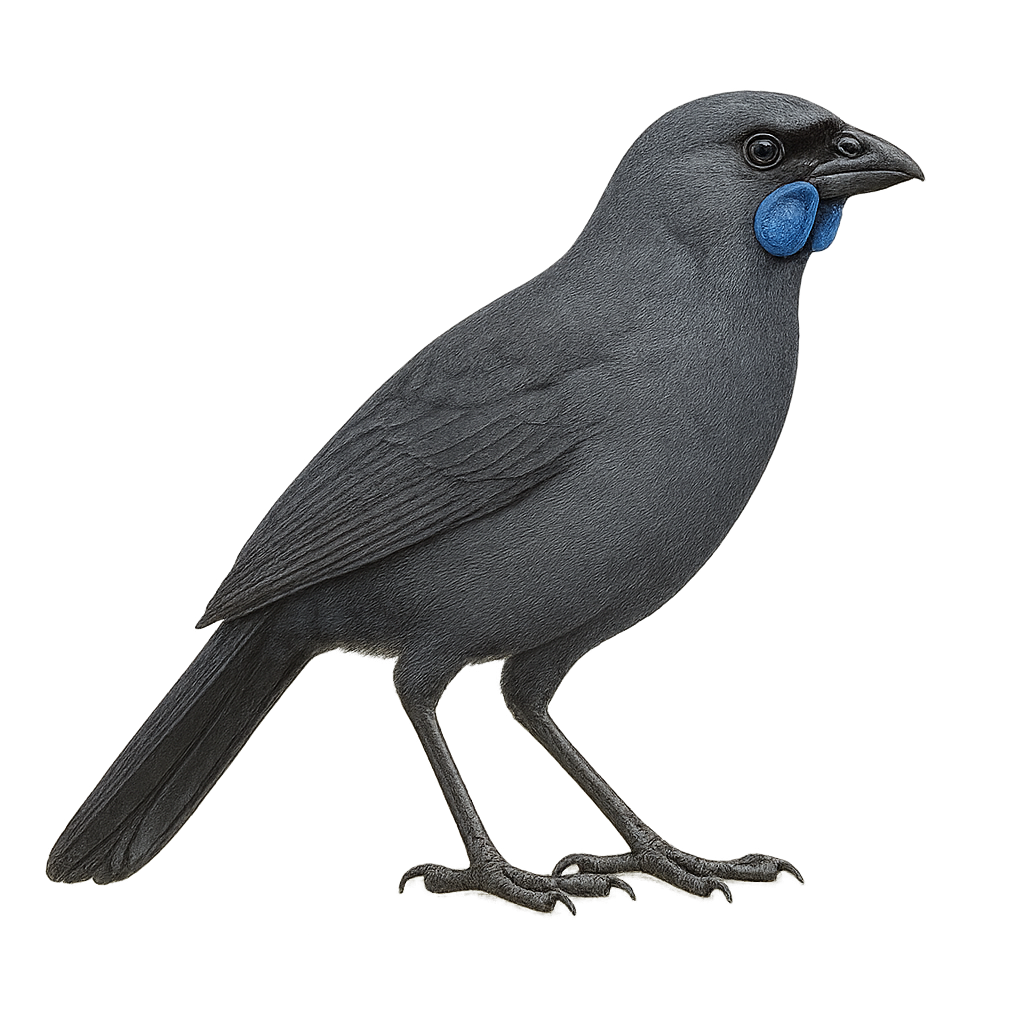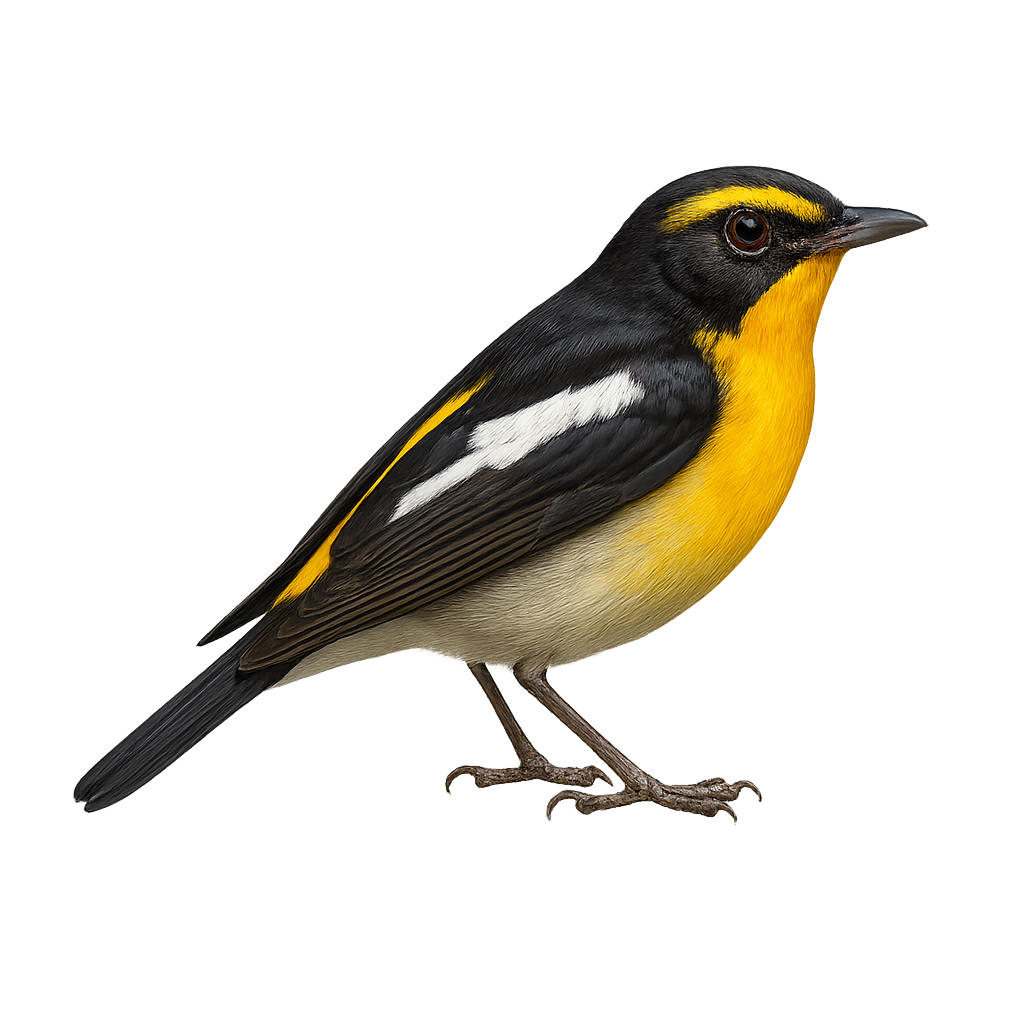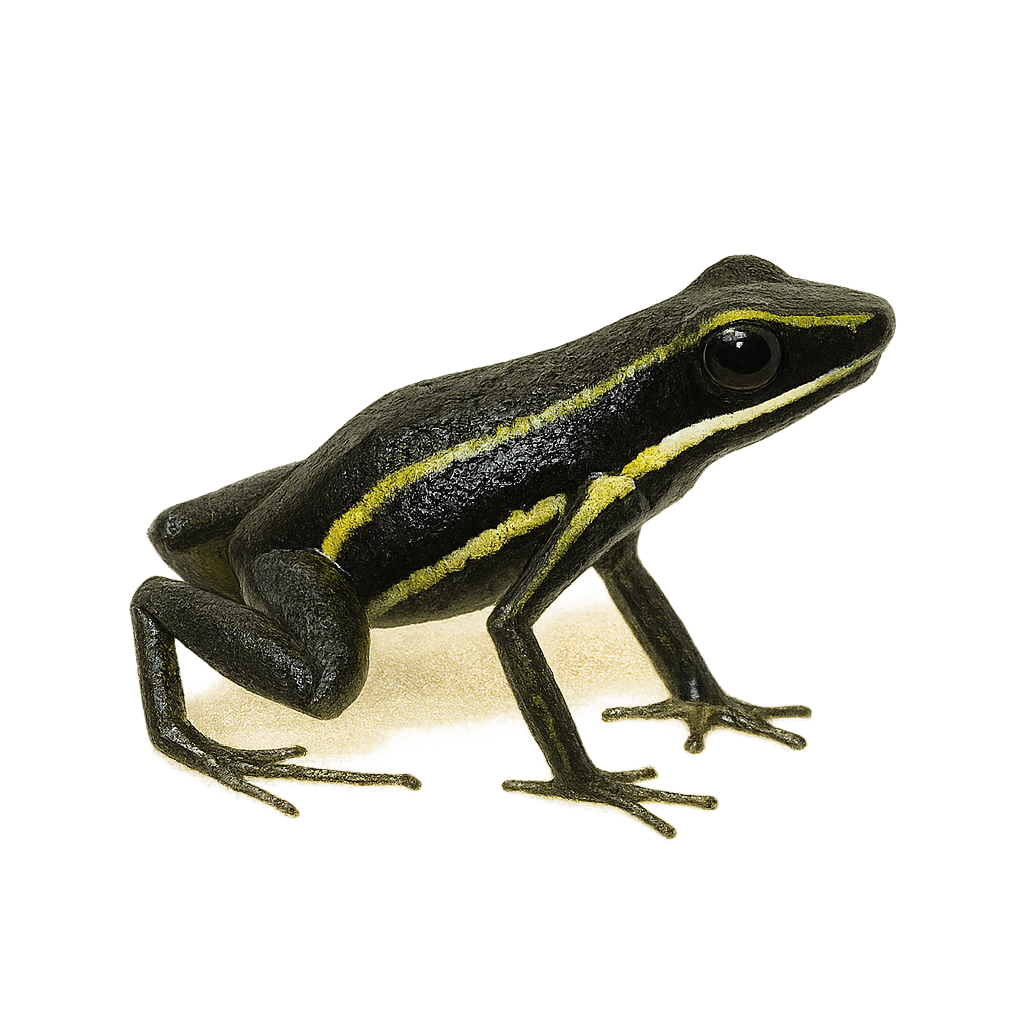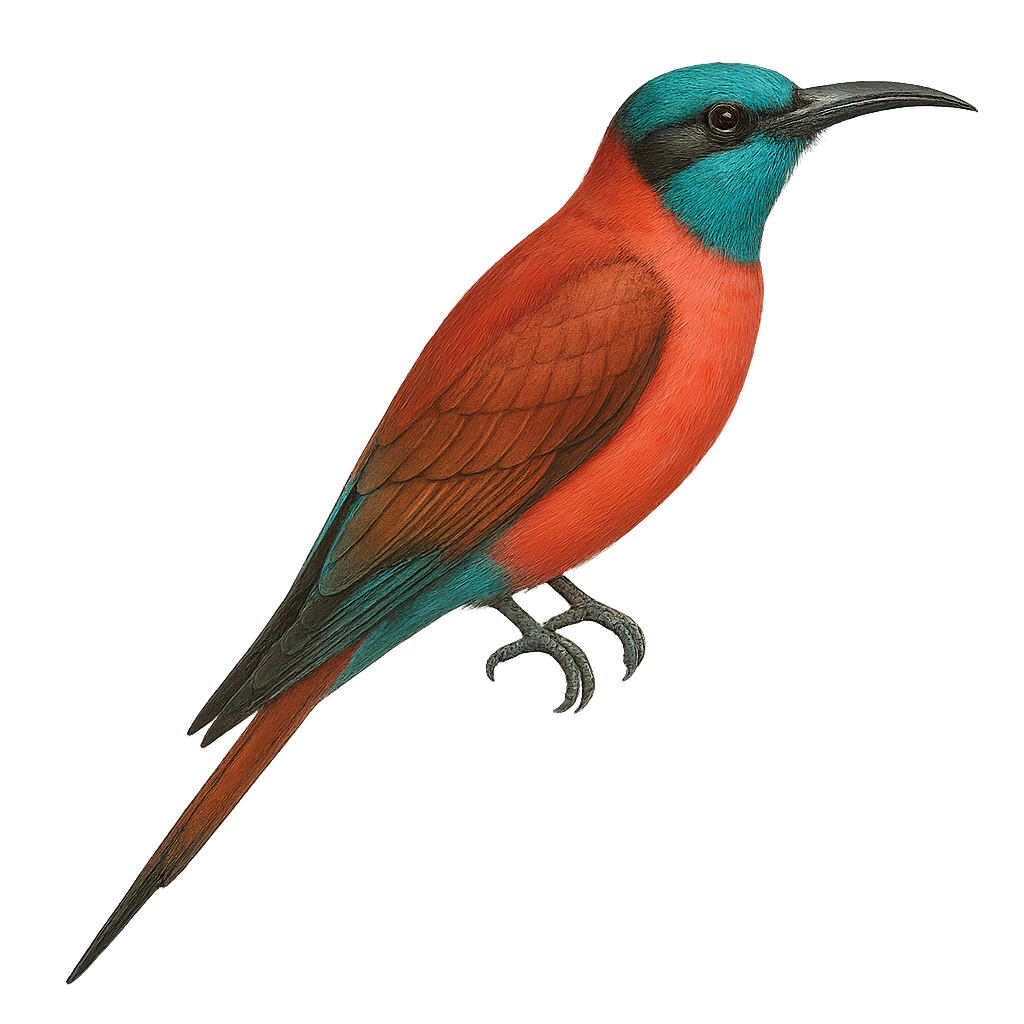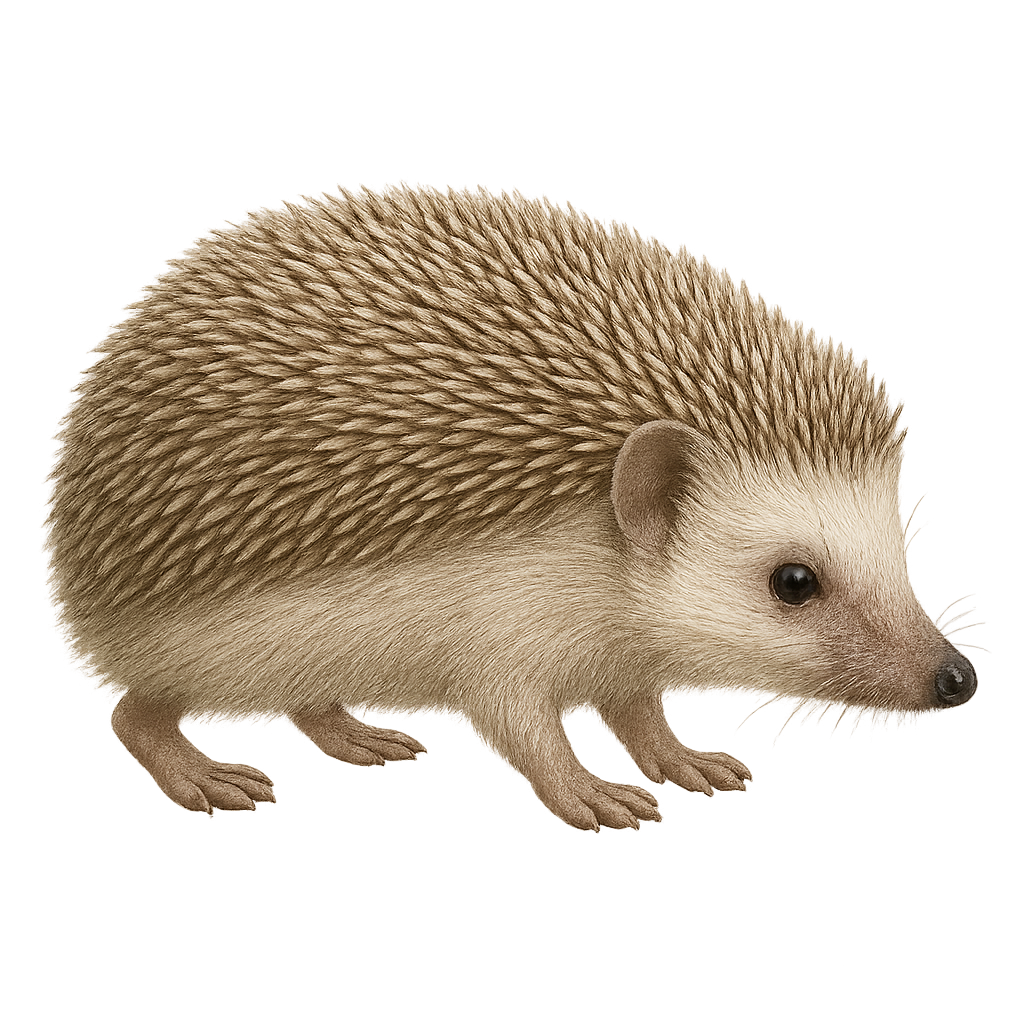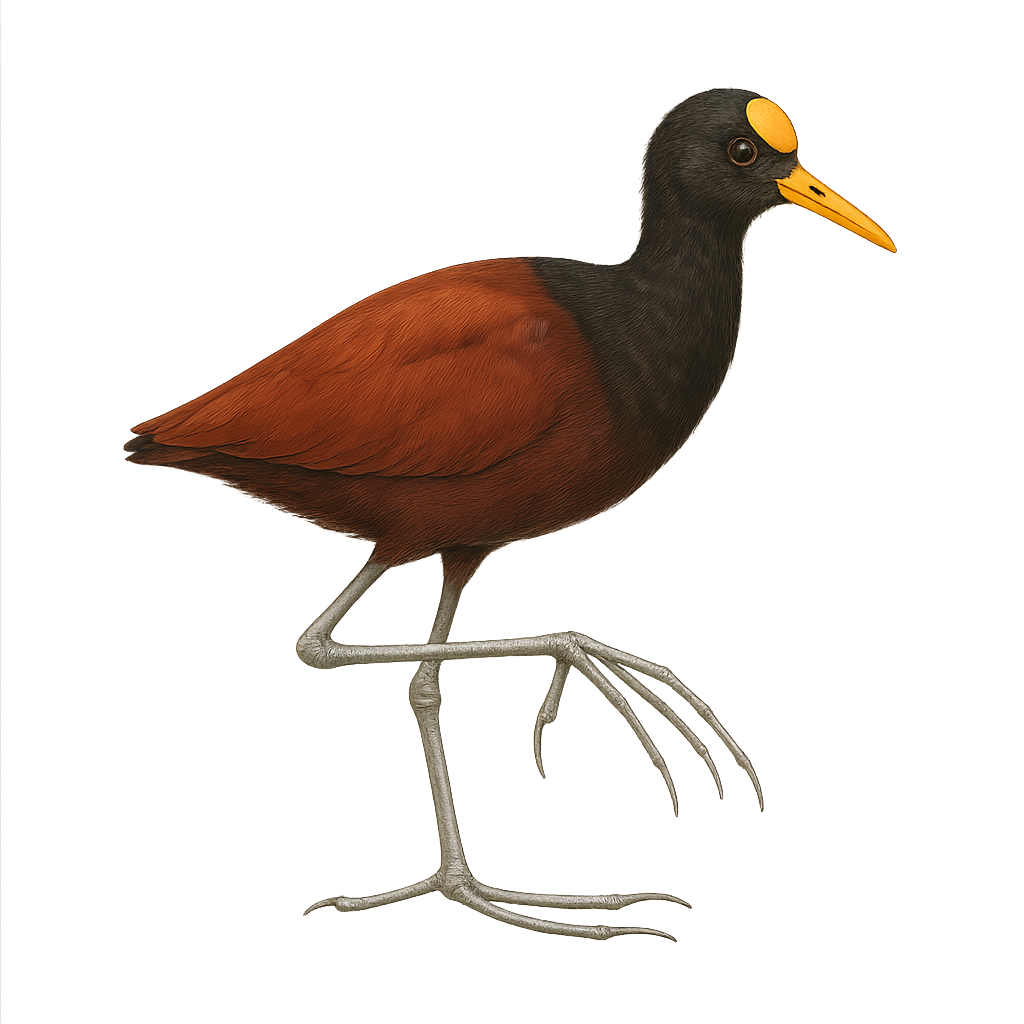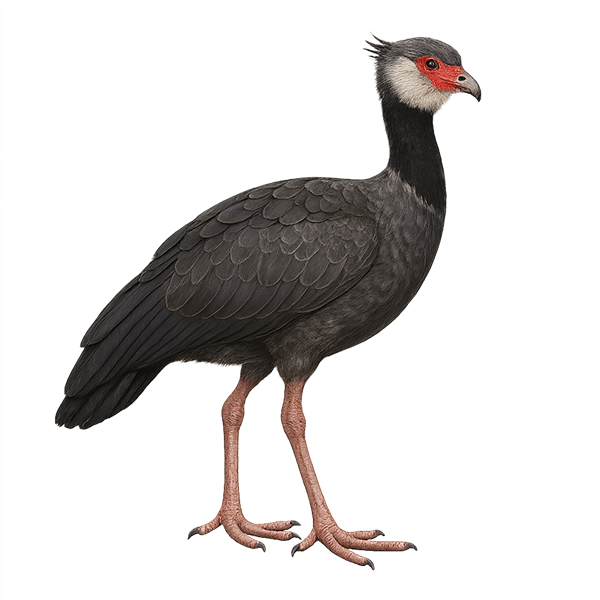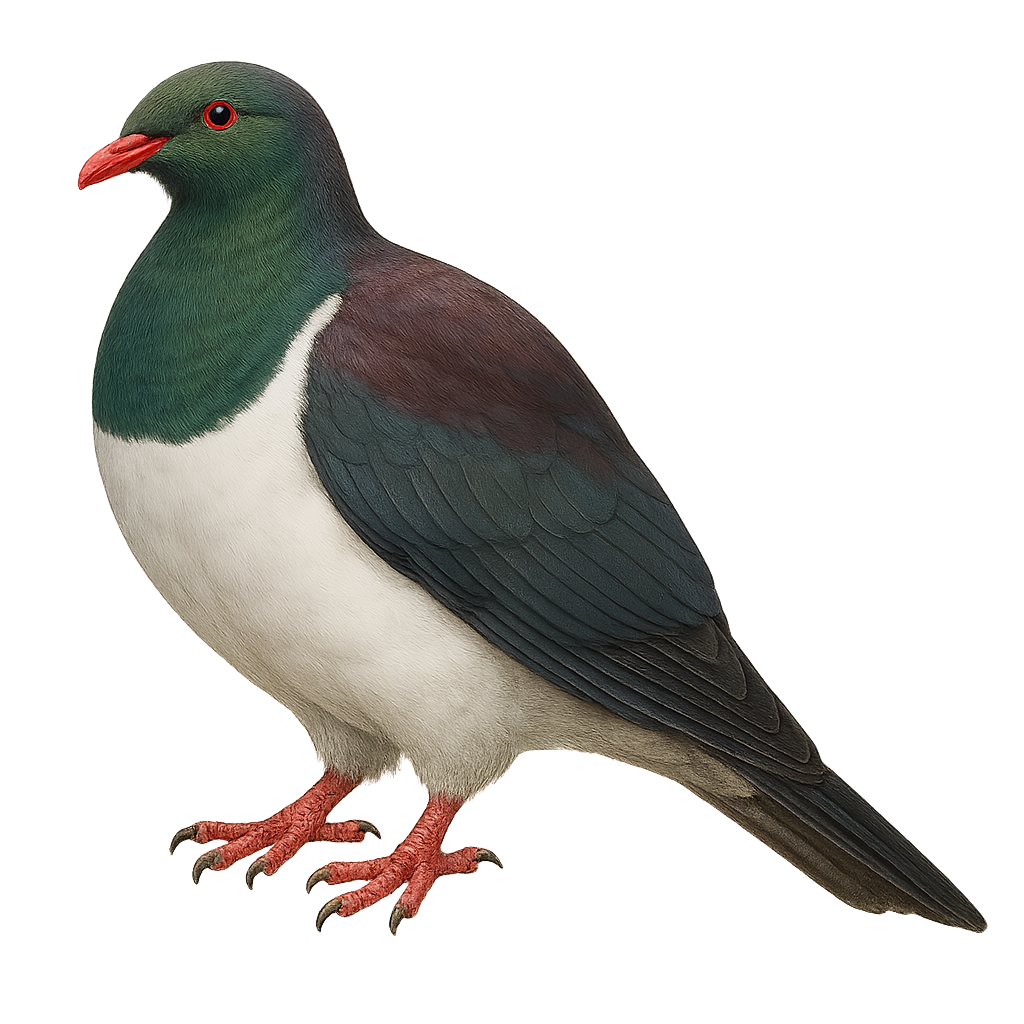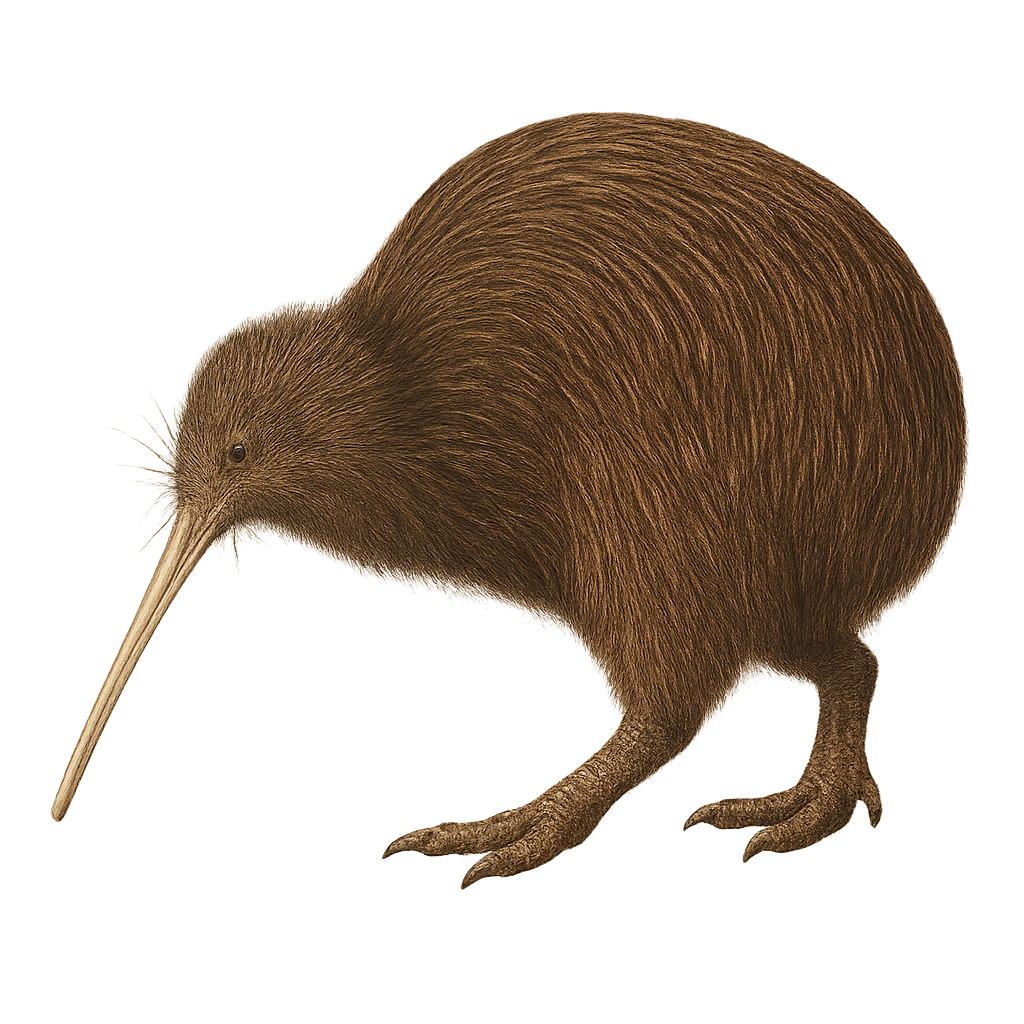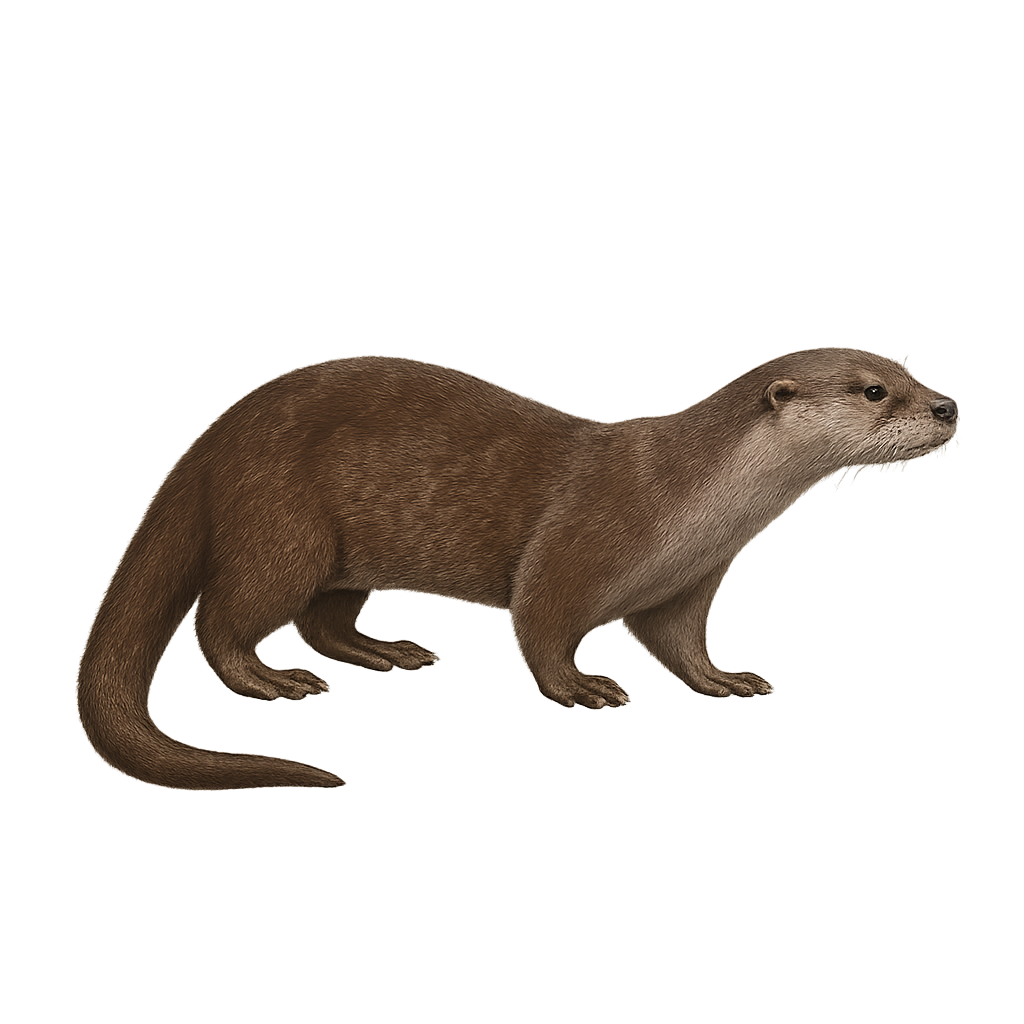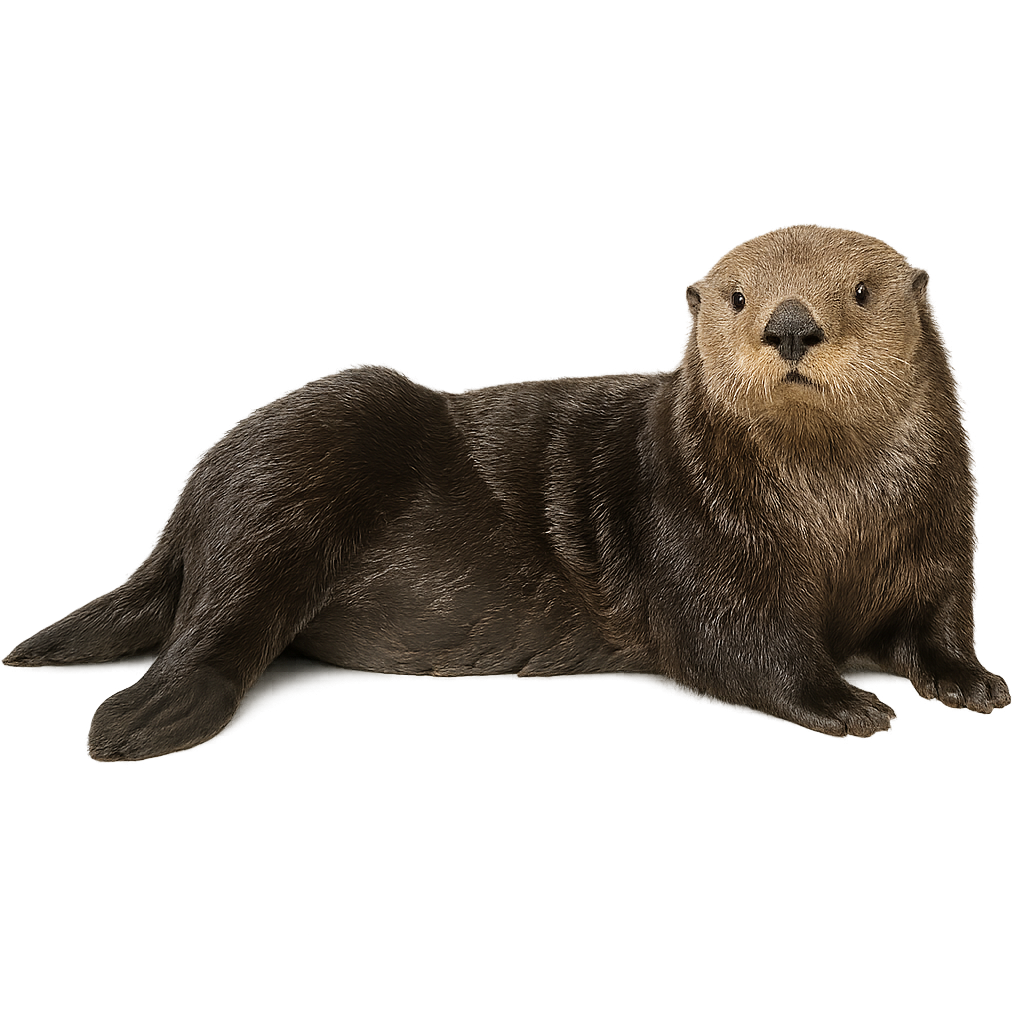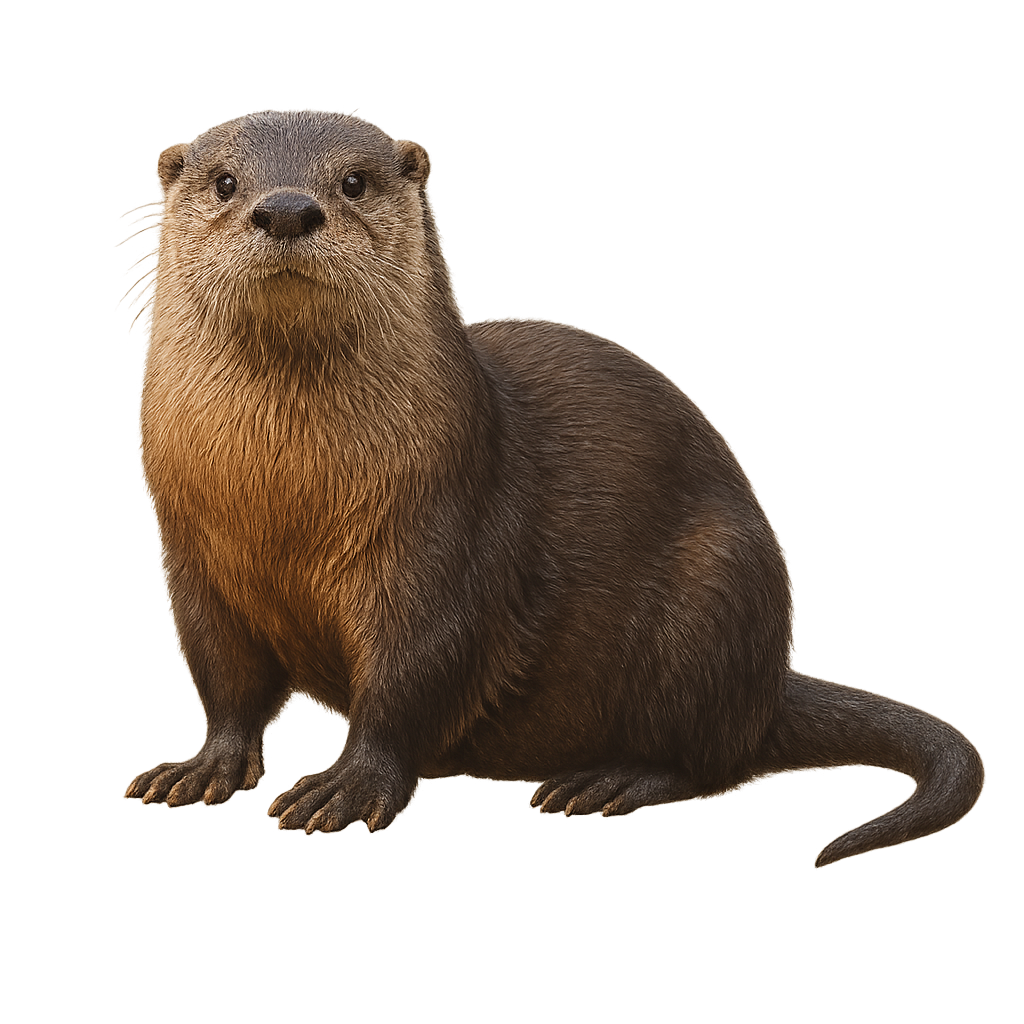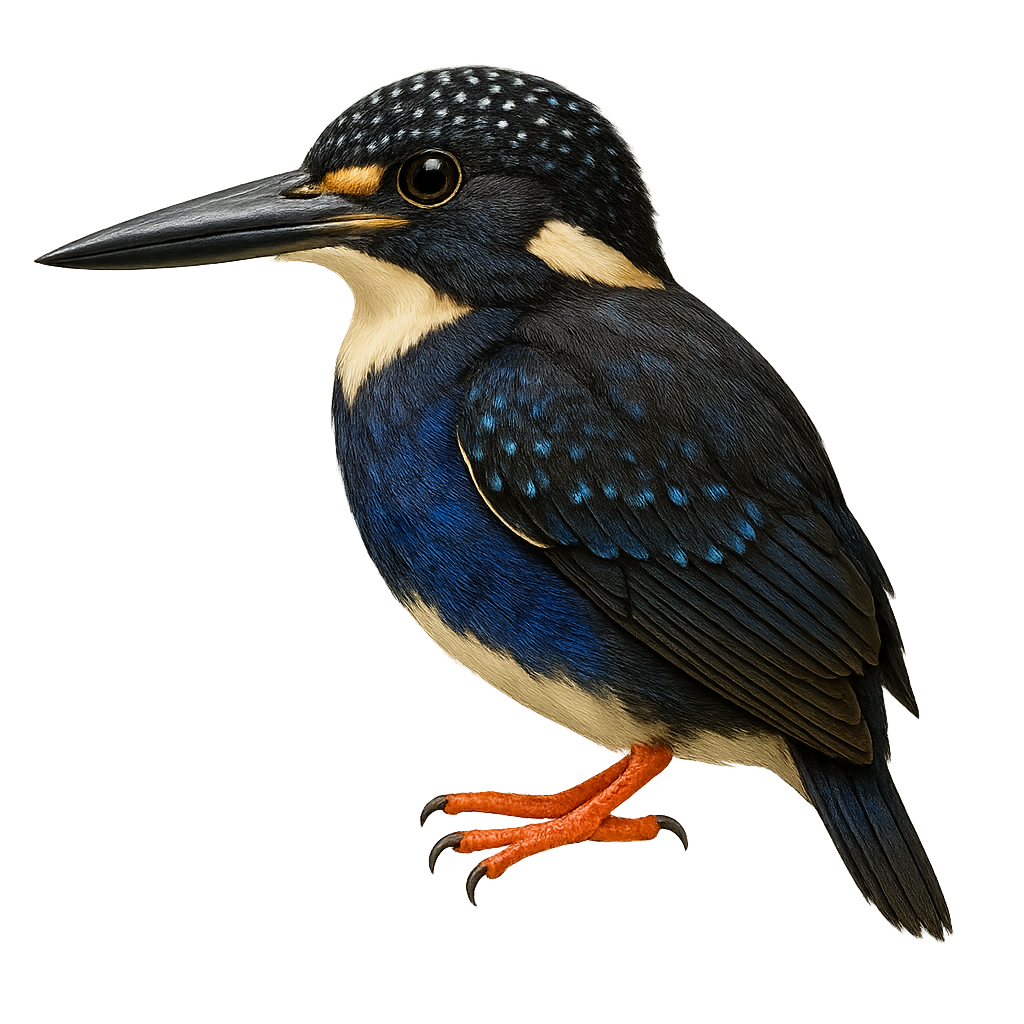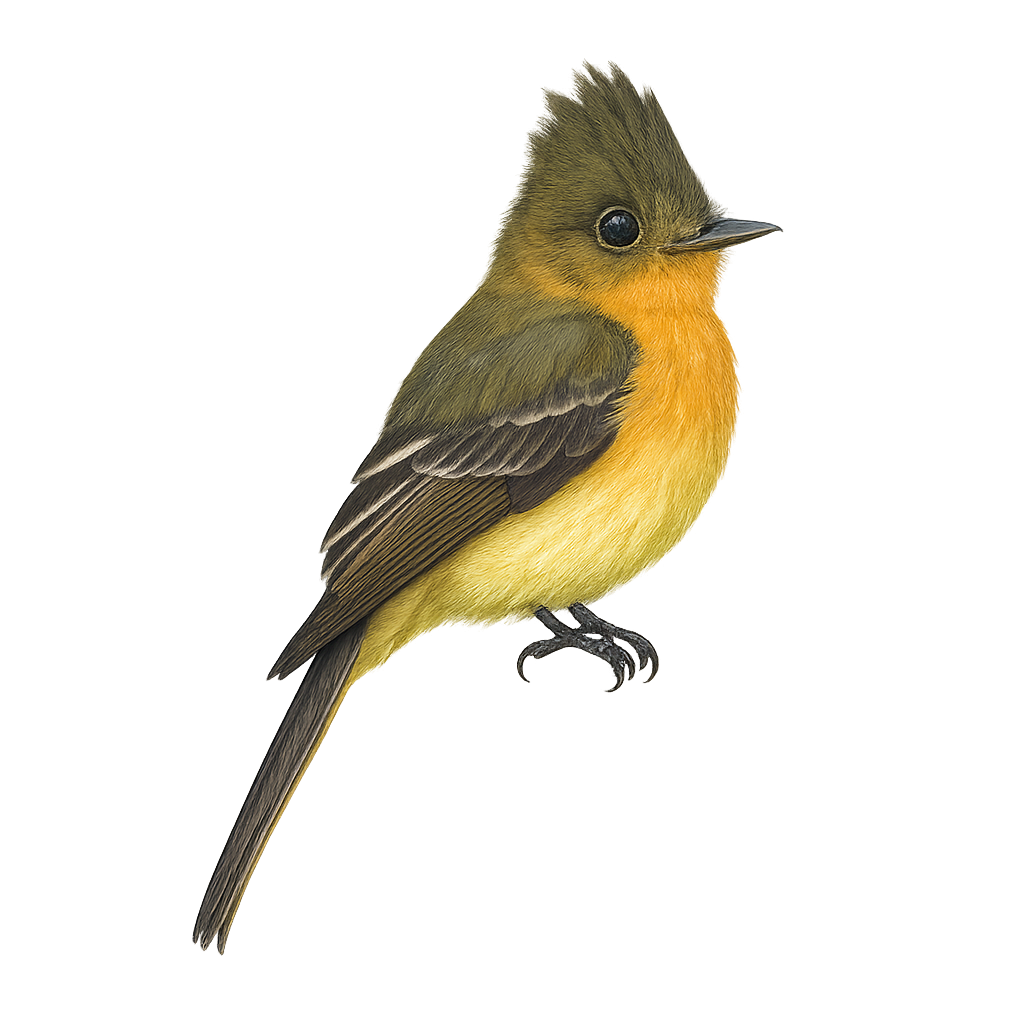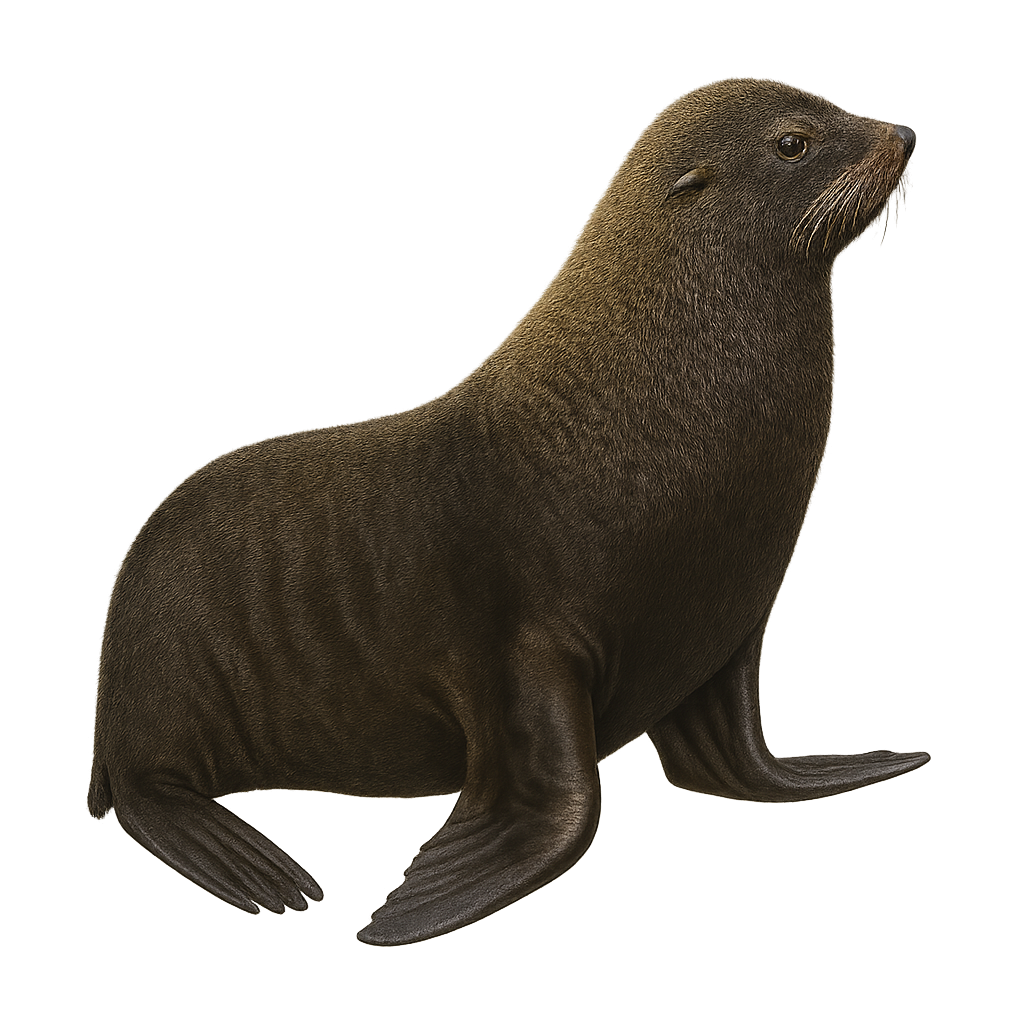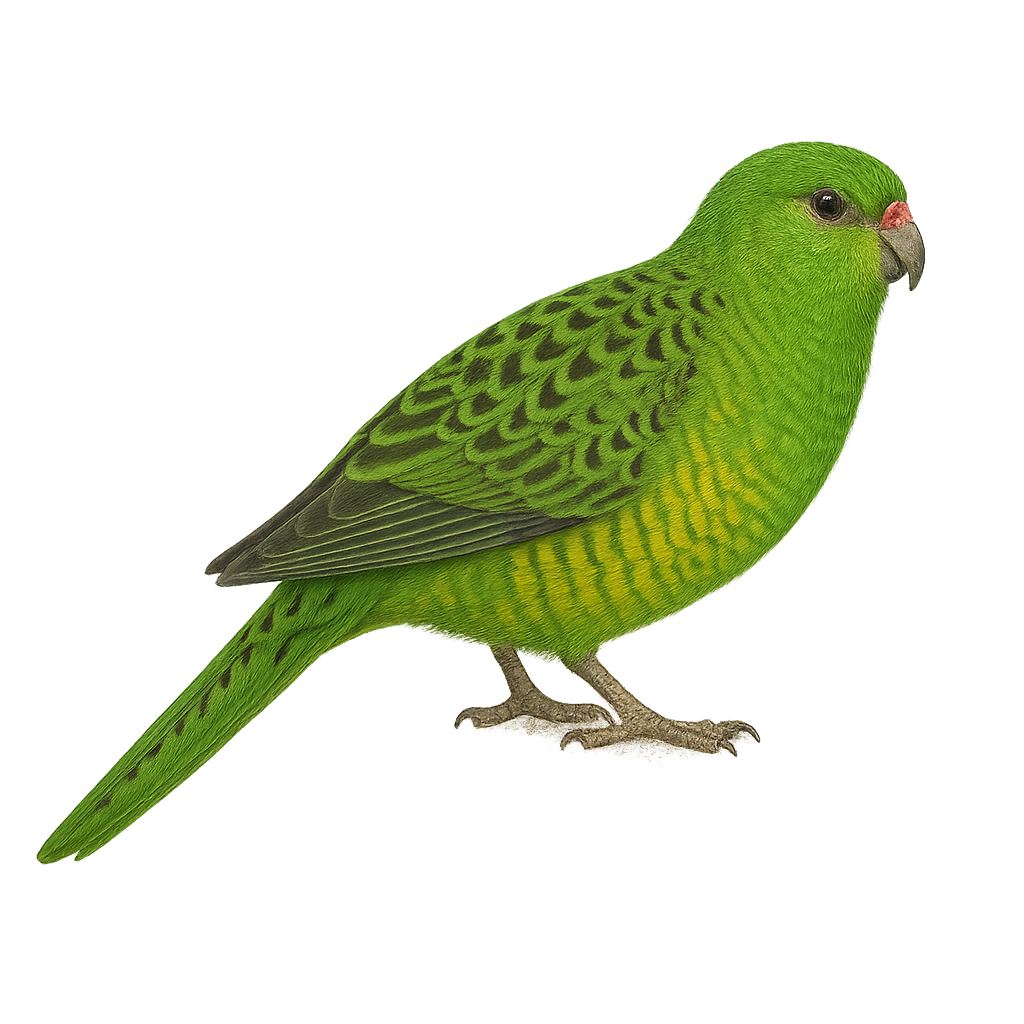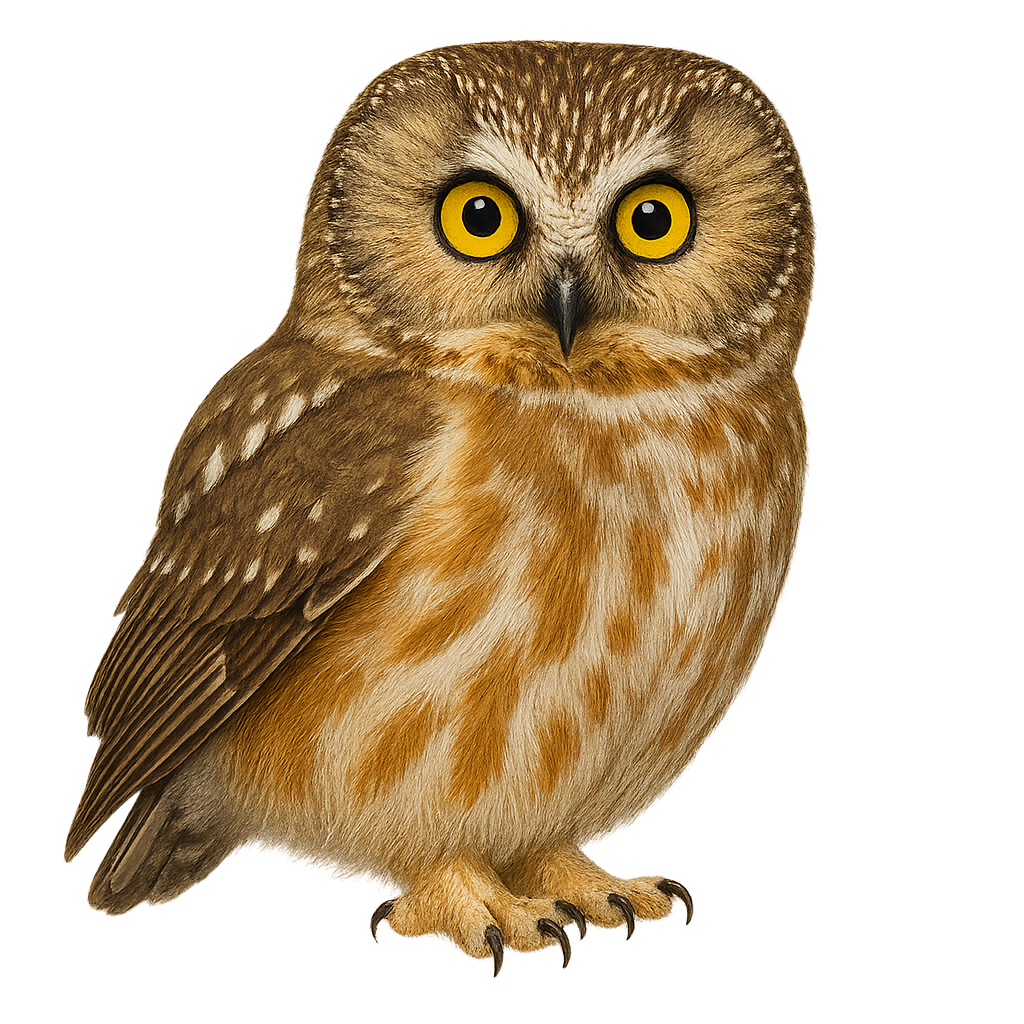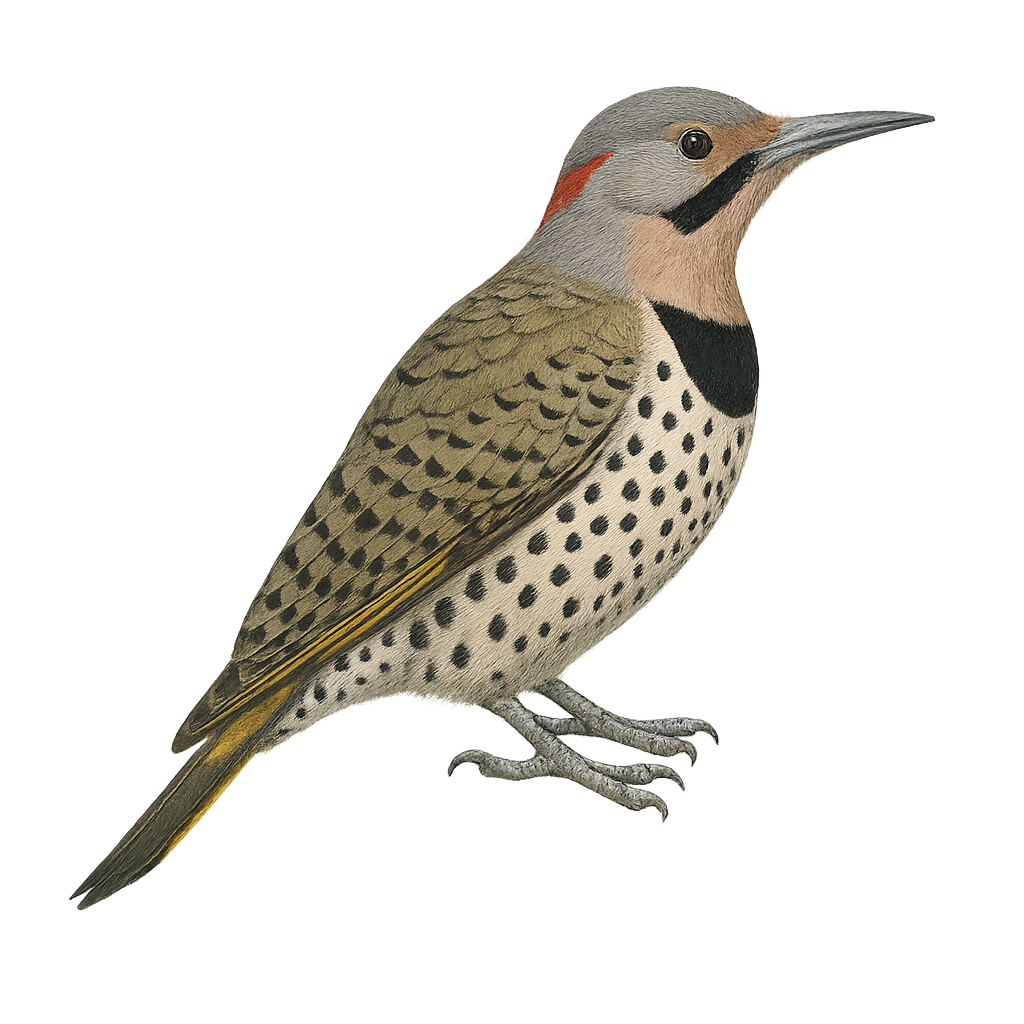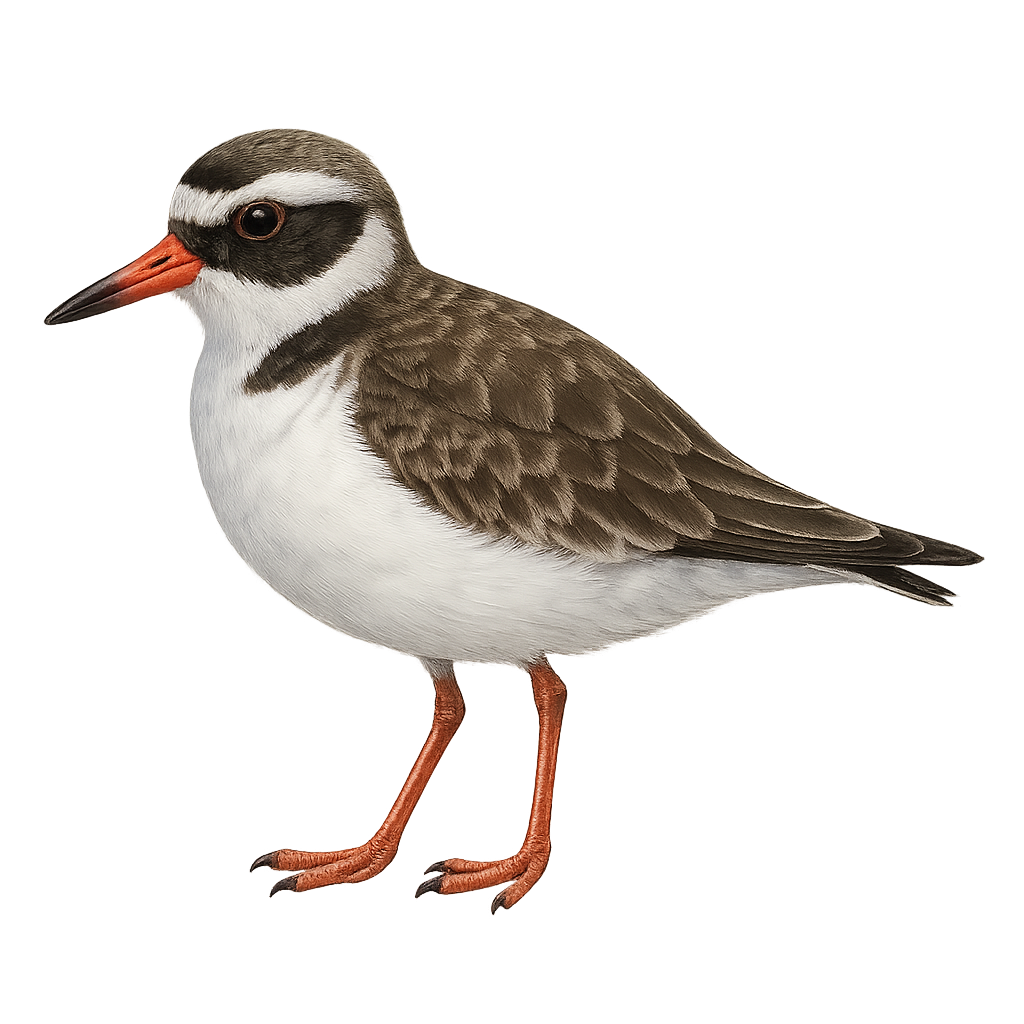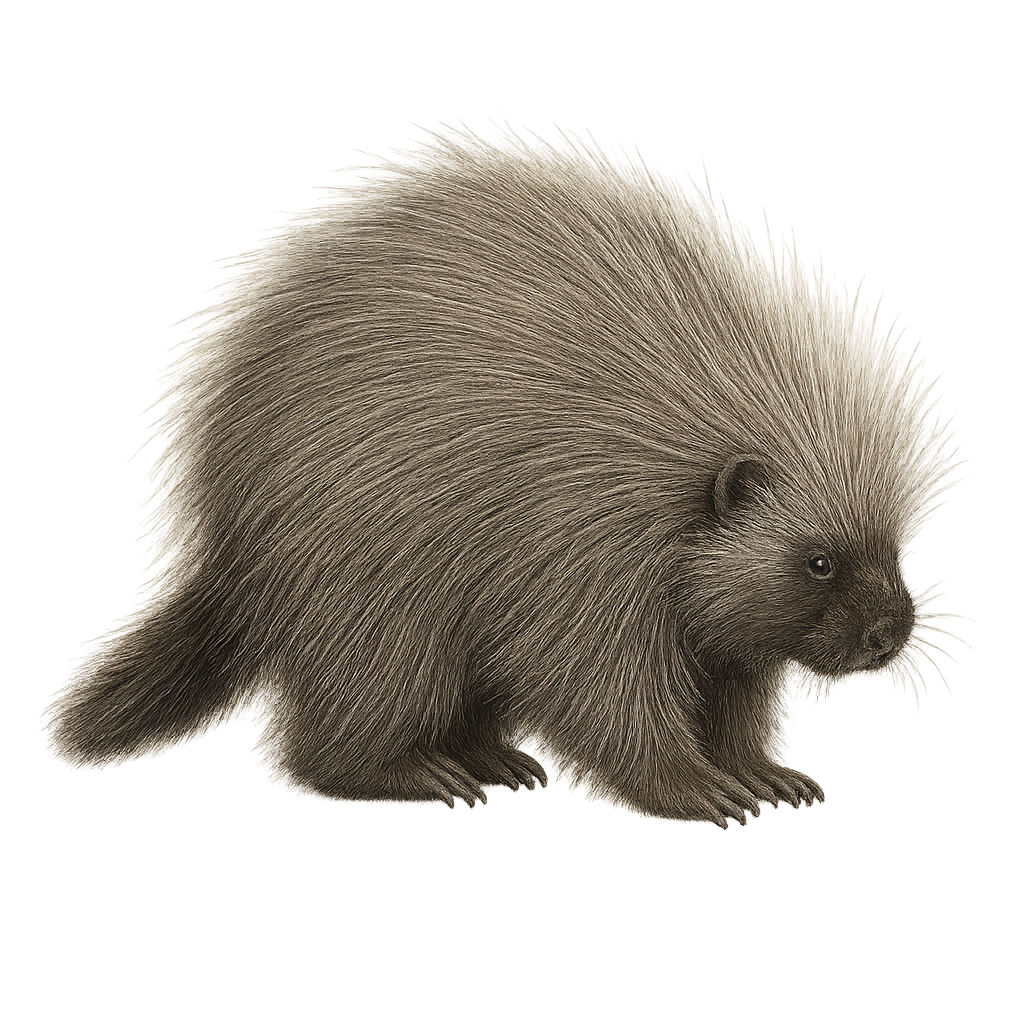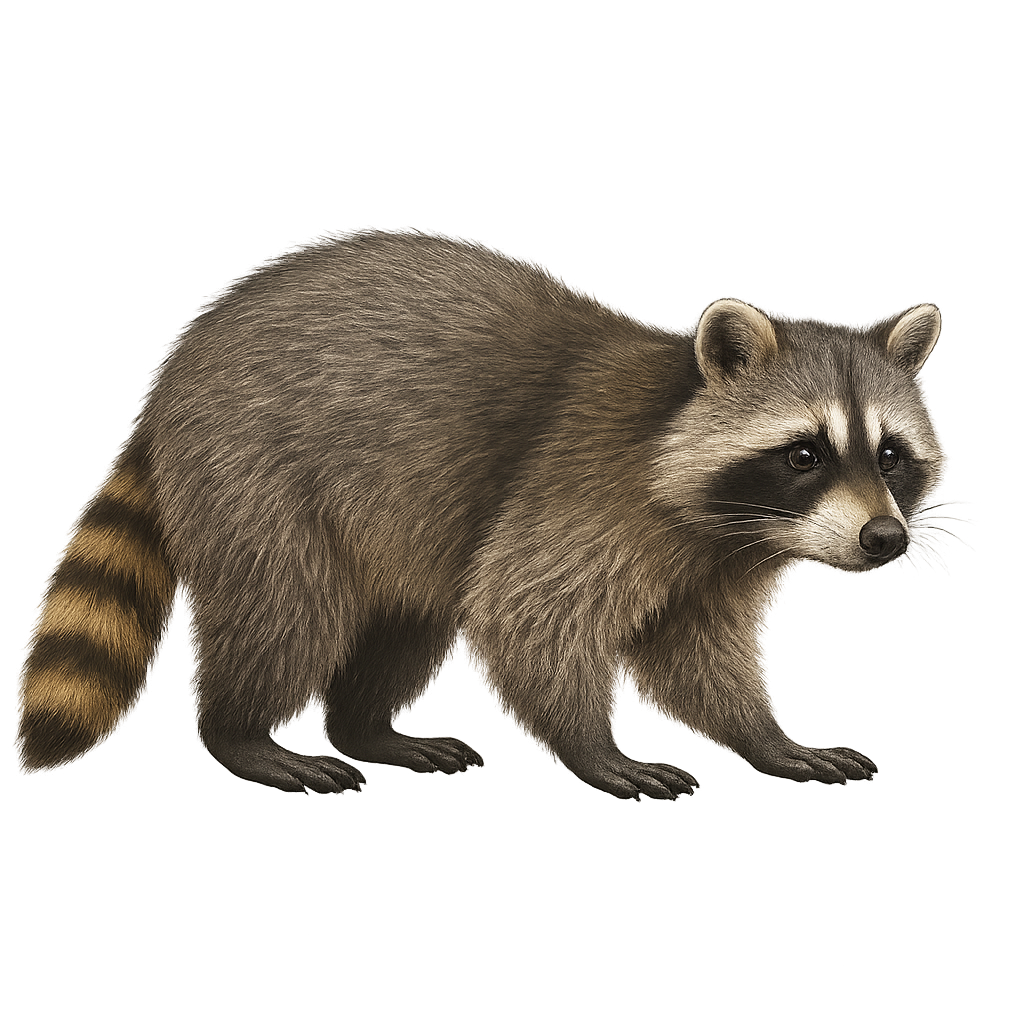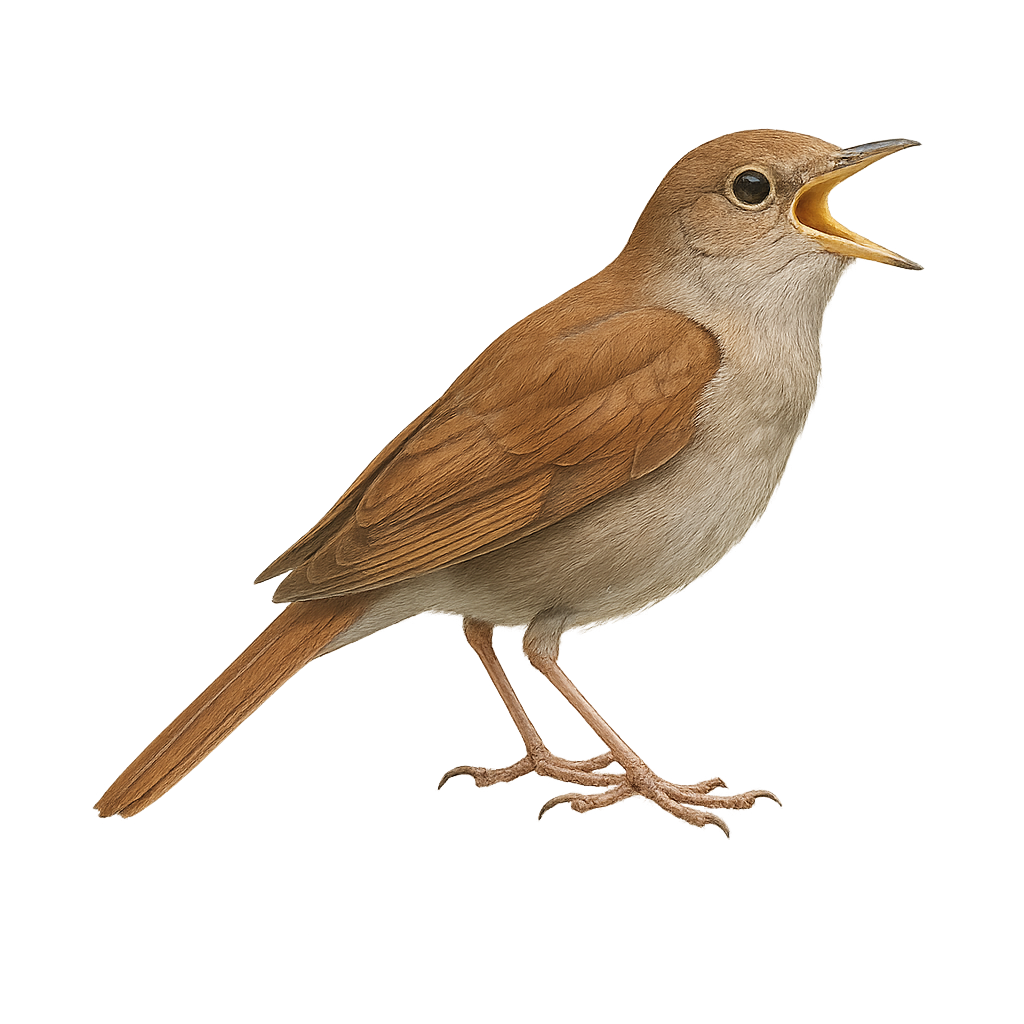The North Island Kōkako, or Callaeas cinereus, is a bird endemic to New Zealand, specifically the North Island. This bird is easily recognizable by its ash-gray color and distinctive blue wattles on the sides of its beak. It primarily inhabits dense, humid forests where it feeds on fruits, leaves, and insects. Although capable of flight, it often prefers to move by hopping from tree to tree. The North Island Kōkako is a territorial and monogamous bird, forming pairs that vigorously defend their territory. Unfortunately, it is threatened by habitat loss and predation by introduced species, leading to a significant decline in its population.
The Narcissus Flycatcher, Ficedula narcissina, is a small passerine bird in the Muscicapidae family, primarily found in East Asia. It is easily recognizable by its striking plumage: males have a black head with a bright yellow throat, a black back, and a white belly. Females are duller with brown and yellow hues. This migratory bird breeds in temperate and subtropical forests, preferring dense wooded habitats. It primarily feeds on insects, catching them in flight. The Narcissus Flycatcher is known for its melodious song, often heard during the breeding season. Although its conservation status is currently "least concern," deforestation poses a potential threat to its natural habitats.
The Nariño Poison Frog, or Epipedobates narinensis, is a brightly colored and toxic frog species native to the humid rainforests of Colombia. Known for its vivid skin and distinctive patterns, it serves as a warning to potential predators. This frog typically measures between 2 and 3 cm in length. It is notable for its ability to secrete toxic alkaloids through its skin, a feature that protects it from predators. It primarily inhabits dense, humid undergrowth, where it feeds on small insects. The Nariño Poison Frog plays a crucial role in the ecosystem by regulating insect populations and serving as a bioindicator of habitat health.
The Narrow-billed Woodcreeper is a medium-sized bird, distinguished by its long, slender bill, perfect for probing bark and crevices in search of insects. Its brownish plumage, with lighter shades on the belly, allows it to blend seamlessly into its forest habitat. This bird is primarily arboreal, moving nimbly along tree trunks. It is often seen in small groups or pairs, especially during the breeding season. The Narrow-billed Woodcreeper is a resident of tropical and subtropical forests but can also be found in open wooded areas. Although relatively common, preserving its habitat is crucial for its long-term survival.
The Narrow-billed Woodcreeper is a fascinating bird, primarily found in the tropical forests of South America. It is distinguished by its long, slender bill, perfect for extracting insects from tree bark. Its reddish-brown plumage allows it to blend seamlessly into its environment, making it difficult to spot. Often seen climbing tree trunks, it uses its stiff tail for support. Though discreet, its melodious song often resonates through the canopy. This bird plays a crucial role in the ecosystem by controlling insect populations. Its ability to adapt to various habitats, including degraded forests, is a testament to its resilience.
The Northern Carmine Bee-eater, Merops nubicus, is a striking bird with vibrant colors, primarily carmine red with blue-green wings and tail. Known for its graceful flight, it skillfully catches insects mid-air, particularly bees and wasps. This sociable bird lives in colonies along rivers and lakes in sub-Saharan Africa, digging burrows in sandy banks for nesting. It is a partial migrant, moving seasonally to follow prey availability. Although its habitat is threatened by human activity, it is currently listed as Least Concern by the IUCN.
The North African Hedgehog, Atelerix algirus, is a small insectivorous mammal found mainly in North Africa and parts of southern Europe. It is characterized by its short spines and light-colored face. This hedgehog is well adapted to arid and semi-arid climates, preferring open areas with sparse vegetation. It is primarily nocturnal, feeding on insects, small invertebrates, and occasionally fruits. Its ability to roll into a ball to protect itself from predators is well known. Although generally solitary, it can be observed in small groups during the breeding season. Its population is stable, but it is threatened by habitat loss and road collisions.
The Northern Jacana, or Jacana spinosa, is a waterbird known for its long legs and elongated toes, allowing it to walk effortlessly on lily pads and other floating vegetation. It features a reddish-brown plumage with bronze-tinted wings and a bright yellow bill extending into a frontal shield. This bird is primarily found in the wetlands of Central America and the southern United States. The Northern Jacana is noted for its polyandrous behavior, where the female mates with multiple males, each taking care of a nest. It feeds mainly on insects, small mollusks, and seeds found on the water's surface.
The Northern Screamer, or Chauna chavaria, is a waterbird from the Anhimidae family, mainly found in Colombia and Venezuela. This bird is recognizable by its dark gray plumage, long legs, and piercing call that echoes through the marshes and wetlands it inhabits. The Northern Screamer is an excellent swimmer and primarily feeds on aquatic plants. It is often seen in pairs or small family groups. Although its appearance is imposing, it is relatively not very shy and can be approached with caution. Its population is currently stable, but habitat destruction remains a potential threat.
The kereru, or New Zealand pigeon, is an endemic bird of New Zealand, known for its iridescent plumage and large size. It features a dark green head and neck, a white belly, and metallic sheen on its back. Measuring about 50 cm in length, it is often seen in native forests, parks, and urban gardens. The kereru plays a crucial role in seed dispersal, aiding forest regeneration. Although its flight is powerful, it is often described as clumsy, making it easily identifiable. Its population is stable, but it remains vulnerable to introduced predators and habitat loss.
The North Island Brown Kiwi, or Mantell's Kiwi, is a flightless bird endemic to New Zealand. It is characterized by its shaggy brown plumage, long slender bill, and nostrils located at the tip of the bill. This nocturnal bird feeds primarily on invertebrates, which it detects using its exceptional sense of smell. It inhabits dense forests, scrublands, and grasslands. The North Island Brown Kiwi is monogamous, forming long-term pairs. The female typically lays one or two eggs per season, which the male incubates. Unfortunately, this species is threatened by introduced mammalian predators and habitat destruction.
The Neotropical Otter, or Lontra longicaudis, is a semi-aquatic mammal found primarily in the rivers and lakes of Central and South America. It is recognizable by its sleek body, dense waterproof fur, and long muscular tail. Measuring between 90 and 150 cm, it typically weighs from 5 to 15 kg. This species is known for its playful and curious behavior, often seen sliding down banks or diving in search of fish, crustaceans, and other small aquatic animals. Although mainly solitary, it can sometimes be seen in small family groups. The Neotropical Otter is an important indicator of aquatic ecosystem health, as it requires clean waters rich in prey.
The Enhydra lutris kenyoni, or northern sea otter, is a fascinating marine mammal known for its dense fur and playful behavior. It primarily inhabits the North American coasts, from Alaska to British Columbia. These otters are skilled divers, feeding on mollusks, crustaceans, and fish. They play a crucial ecological role by regulating sea urchin populations, thus preserving kelp forests. Sea otters are often seen floating on their backs, using stones to open shells. Although their population was decimated by hunting for their fur, conservation efforts have led to some recovery. However, they remain vulnerable to oil spills and climate change.
The North American River Otter, or Lutra canadensis, is a semi-aquatic mammal belonging to the Mustelidae family. It is recognizable by its streamlined body, webbed feet, and muscular tail. Its thick, waterproof fur ranges from dark brown to silvery gray. Measuring between 90 and 135 cm, it typically weighs 5 to 14 kg. Adapted to aquatic life, it is an agile and fast swimmer. It primarily feeds on fish, but also consumes crustaceans, amphibians, and small mammals. The river otter is a social animal, often observed in family groups. It plays a crucial role in the ecosystem by regulating fish populations and maintaining the health of waterways.
The Northern Silvery Kingfisher, or Ceyx flumenicola, is a small, brightly colored bird, primarily blue and orange, found in the humid tropical forests of Southeast Asia. It is renowned for its ability to swiftly dive into water to catch fish and aquatic insects. This kingfisher prefers clear streams and slow-moving rivers, where it can easily spot its prey. Although discreet, it is often noticed due to its sharp, piercing call. Its small size and rapid flight make it difficult to observe, but its beauty makes it a favorite subject for birdwatchers and photographers.
The Northern Tufted Flycatcher, Mitrephanes phaeocercus, is a small bird primarily found in the mountainous forests of Central and South America. It is distinguished by its brown tail and plumage in shades of gray and brown. This bird is often seen catching insects in flight, thanks to its agile and quick movements. It is also known for its melodious song, which echoes in the forests where it resides. Although it is relatively not very shy, it prefers dense habitats where it can hide from predators. Its presence is an indicator of the health of forest ecosystems.
The Narwhal is a unique cetacean, often referred to as the "unicorn of the seas" due to the long twisted tusk it possesses, typically in males. It measures between 4 and 5 meters in length and can weigh up to 1,600 kg. The narwhal's tusk can reach up to 3 meters in length and is actually a tooth that grows asymmetrically, often spiraling. Its body is gray to white with black and white patches that vary from one individual to another. The Narwhal primarily inhabits the cold waters of the Arctic, where it feeds on fish, crustaceans, and cephalopods. It is an excellent diver, capable of descending to great depths in search of food. While its population remains relatively stable, it is threatened by climate change, water pollution, and human disturbances. Due to its beauty and rarity, it is also highly sought after for illegal horn trade.
The Nicobar Pigeon, or Caloenas nicobarica, is a fascinating bird known for its iridescent plumage with metallic shades of green, blue, and copper. It is endemic to the islands of the Indian and Pacific Oceans, particularly the Nicobar Islands, from which it gets its name. This medium-sized pigeon measures about 40 cm in length and is distinguished by its short white tail, contrasting with its colorful body. The Nicobar Pigeon is primarily frugivorous, feeding on fruits, seeds, and small invertebrates. It plays a crucial role in seed dispersal, contributing to the regeneration of tropical forests. Unfortunately, it is threatened by hunting and habitat loss.
The numbat is a small insectivorous marsupial endemic to Western Australia, measuring 25–35 cm long with a reddish coat marked by horizontal white bands. Strictly diurnal, it feeds almost exclusively on termites, which it captures using its long sticky tongue and powerful front claws. Solitary, it occupies abandoned burrows or natural hollows in dry eucalyptus woodlands and pine forests. During the breeding season, males and females become more territorial and engage in rapid ground chases before mating.
The Arctocephalus forsteri, commonly known as the New Zealand fur seal, is a marine mammal species belonging to the Otariidae family. These seals are primarily found around the coasts of New Zealand and parts of Australia. They are distinguished by their dense, waterproof fur, which protects them from cold waters. Males are significantly larger than females, reaching up to 2.5 meters in length and weighing around 180 kg, while females measure about 1.5 meters and weigh up to 50 kg. These animals are known for their agility in the water, where they primarily hunt fish and cephalopods. On land, they gather in colonies, especially during the breeding season.
The Northern fur seal, Callorhinus ursinus, is a marine mammal belonging to the Otariidae family. It is distinguished by its thick fur, which allows it to withstand the cold waters of the North Pacific. Males are significantly larger than females, reaching up to 2.1 meters in length and weighing around 270 kg, while females measure about 1.4 meters and weigh 50 kg. These seals are known for their gregarious behavior, forming large colonies on rocky islands to breed. They primarily feed on fish and squid, which they capture during dives that can reach depths of 200 meters.
The Night Parrot, or Pezoporus occidentalis, is a rare and elusive bird from Australia, primarily nocturnal and difficult to spot. It is medium-sized, with green plumage speckled with yellow and black, allowing it to blend seamlessly into its arid habitat. Its short, sturdy beak is well-suited for its diet of seeds and grasses. Known for its melodious yet discreet call, this bird's song echoes across the desert plains. It is often solitary or found in small groups, moving mainly on the ground and using its wings for short flights. Its rarity and secretive behavior make it a fascinating subject of study for ornithologists and nature enthusiasts.
The Northern Saw-whet Owl, Aegolius acadicus, is a small owl in the Strigidae family. It measures about 18 to 21 cm in length with a wingspan of 42 to 56 cm. Its plumage is brown with white spots on the belly and a pale face surrounded by a distinctive facial disk. Primarily nocturnal, it feeds on small mammals, birds, and insects. It inhabits coniferous and mixed forests across North America, from southern Canada to the northern United States. Though elusive and hard to spot, its soft, repetitive call is often heard during the breeding season.
The Nuttall's Woodpecker is a medium-sized bird, measuring about 18 to 21 cm in length. It is primarily black and white, with distinctive stripes on its back and wings. Males are marked by a red patch on the nape, which is absent in females. This woodpecker is mainly found in oak forests of California and northern Mexico. It primarily feeds on insects dislodged from tree bark, but also consumes fruits and seeds. Its call is a rapid trill, and it often drums on trunks to mark its territory. Although relatively common, it is sensitive to habitat loss due to urbanization.
The Northern Flicker, or Colaptes auratus, is a captivating bird from the Picidae family. It is distinguished by its striking plumage, blending shades of brown, black, and gold, with red or yellow markings depending on the subspecies. This flicker is widespread across North America, inhabiting various environments from forests to urban parks. Known for its unusual terrestrial behavior for a woodpecker, it is often seen pecking the ground in search of ants and other insects. The Northern Flicker is also famous for its loud drumming, used to mark territory and attract a mate. Although generally tolerant of human presence, it remains vigilant and may quickly fly away if threatened.
The New Zealand Dotterel is an endemic bird of New Zealand, recognizable by its medium size and light brown plumage with a paler breast. It primarily inhabits sandy beaches and estuaries, where it feeds on small invertebrates. This bird is often seen in small groups, especially outside the breeding season. The New Zealand Dotterel is a threatened species, mainly due to predation by introduced species and habitat loss. Conservation efforts are underway to protect its nesting sites and reduce threats to its survival.
The North American Porcupine, Erethizon dorsatum, is a tree-dwelling rodent known for its sharp quills that protect it from predators. Measuring between 60 and 90 cm long, excluding its 20 to 30 cm tail, it typically weighs between 5 and 14 kg. Its fur is dark brown to black, interspersed with white or yellow quills. These quills, which can reach 7.5 cm, are modified hairs that easily detach to embed in predators' skin. This rodent is primarily nocturnal, feeding on leaves, bark, and fruits. It inhabits the coniferous and mixed forests of North America, from Canada to northern Mexico. Although an agile climber, it also spends considerable time on the ground.
The Raccoon is a small omnivorous mammal native to North America, but it has now spread widely to other regions of the world, including Europe and Asia. It measures about 40 to 70 cm in length, with a tail of 20 to 40 cm, and weighs between 4 and 10 kg. Its fur is primarily gray, with a distinctive black mask around the eyes, giving it a unique appearance. The Raccoon is an excellent climber and feeds on fruits, nuts, small animals, insects, as well as food scraps when it lives near human settlements. It is known for its curious behavior and its habit of "washing" its food, although this gesture is actually a reaction to the sensation of moisture in its paws. While its population is widespread, this species can sometimes be seen as a pest, especially due to its tendency to rummage through trash and cause damage to homes.
The Northern right whale fin is a large baleen whale that primarily lives in the cold waters of the Atlantic and Pacific Oceans. It is one of the largest cetaceans, characterized by its streamlined body and fast swimming. Unlike other whales, it prefers deeper waters and is less often observed near the coast. The Northern right whale fin is threatened by pollution, underwater noise, and ship collisions, and is classified as vulnerable due to past commercial whaling.
The nightingale is a small passerine bird known for its melodious and powerful song, found primarily in woodlands, thickets, and gardens across Europe and Asia. It is easily recognized by its brown-russet plumage and light belly, as well as its relatively short beak. The nightingale is especially famous for its song, which is particularly vibrant and long, especially during the breeding season. It prefers dense and well-hidden habitats to feed on insects and worms.


